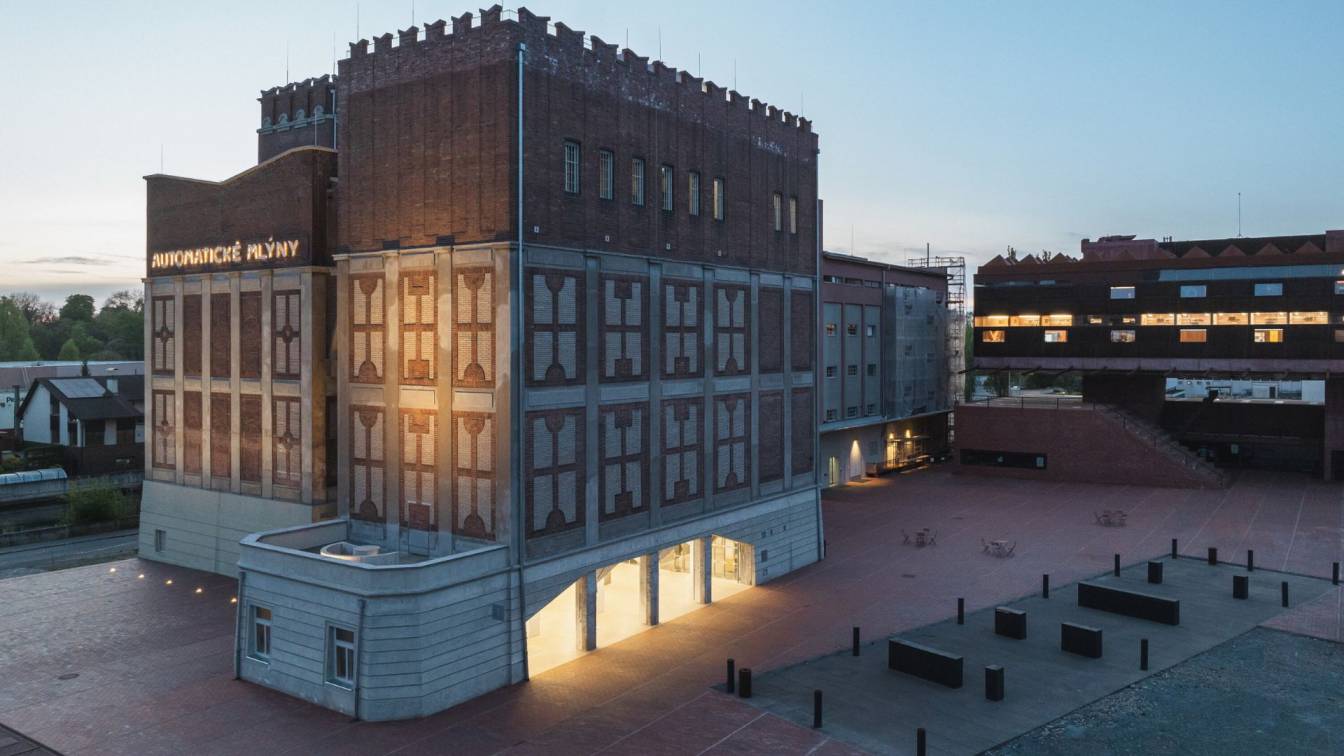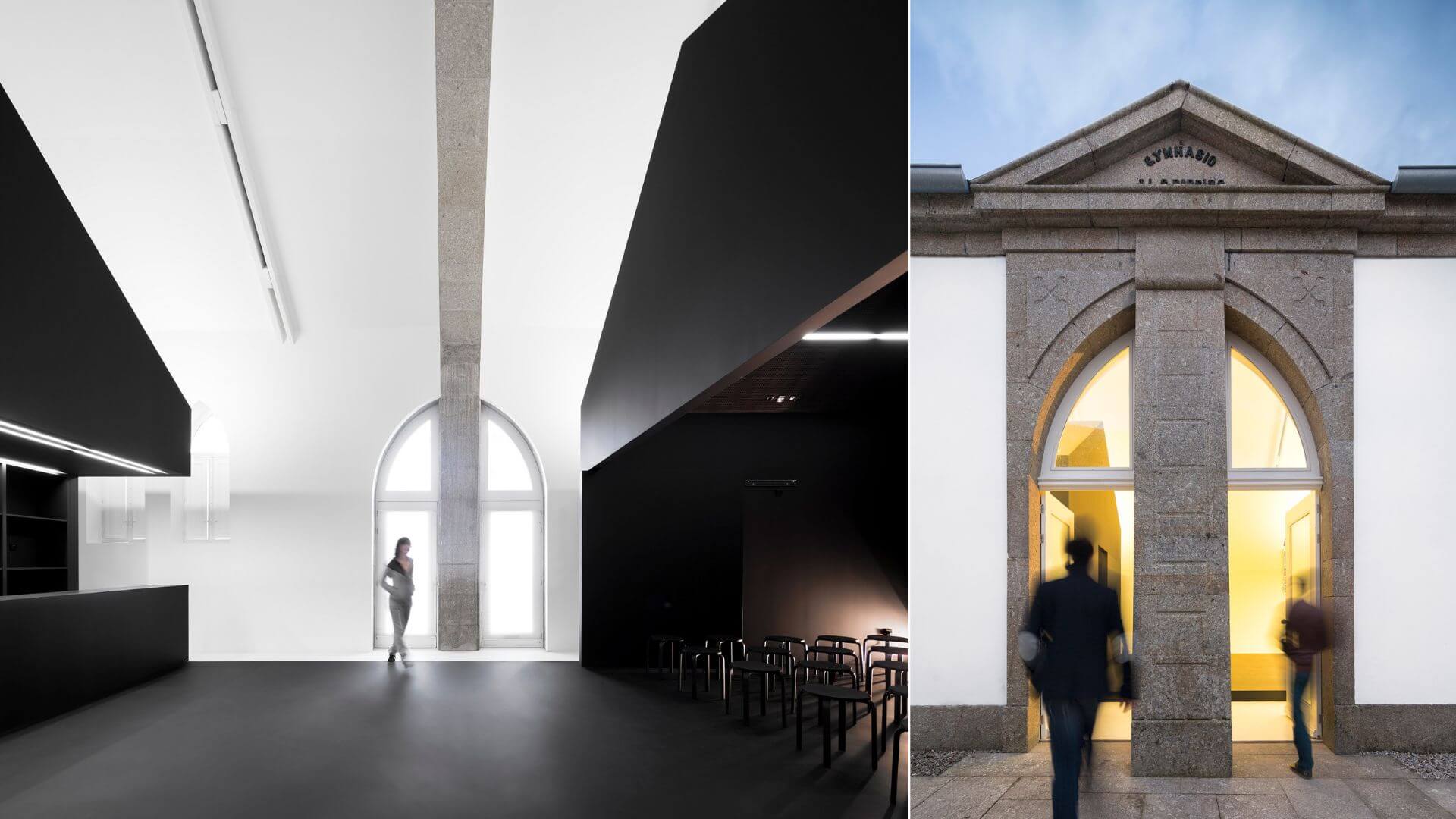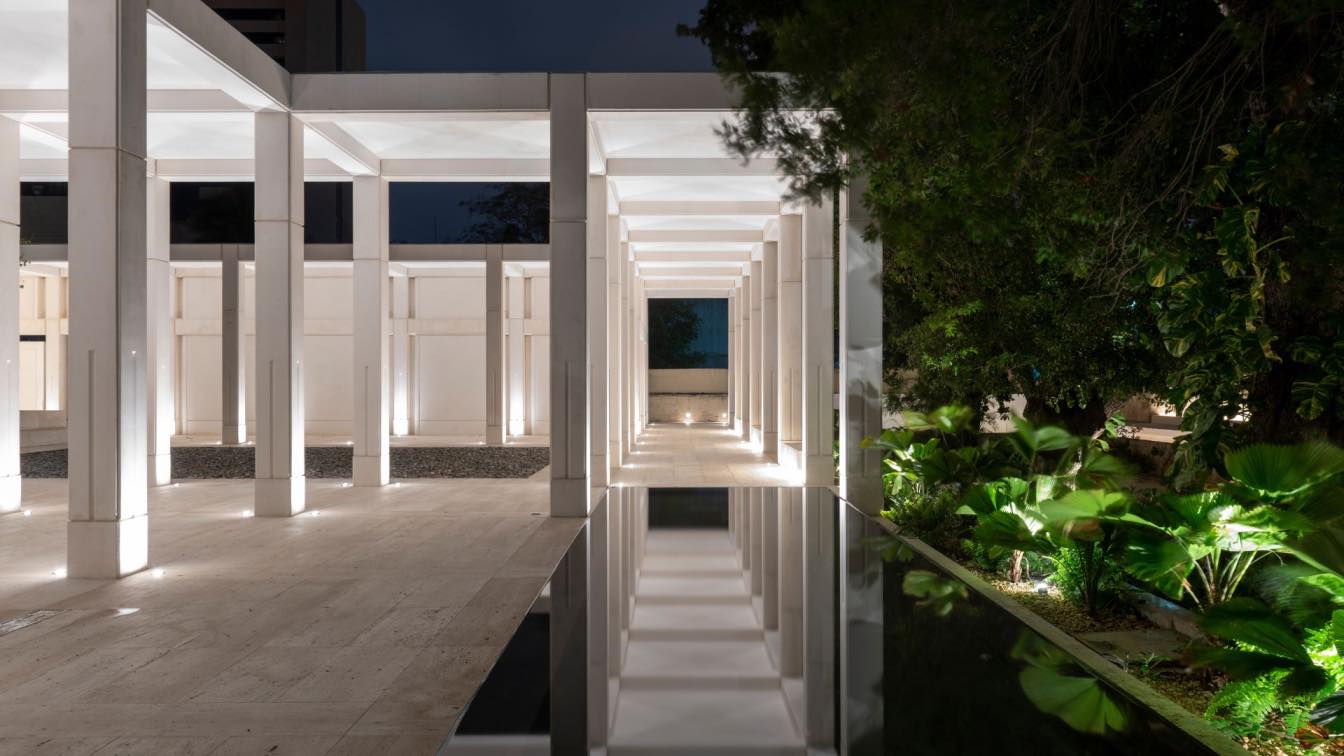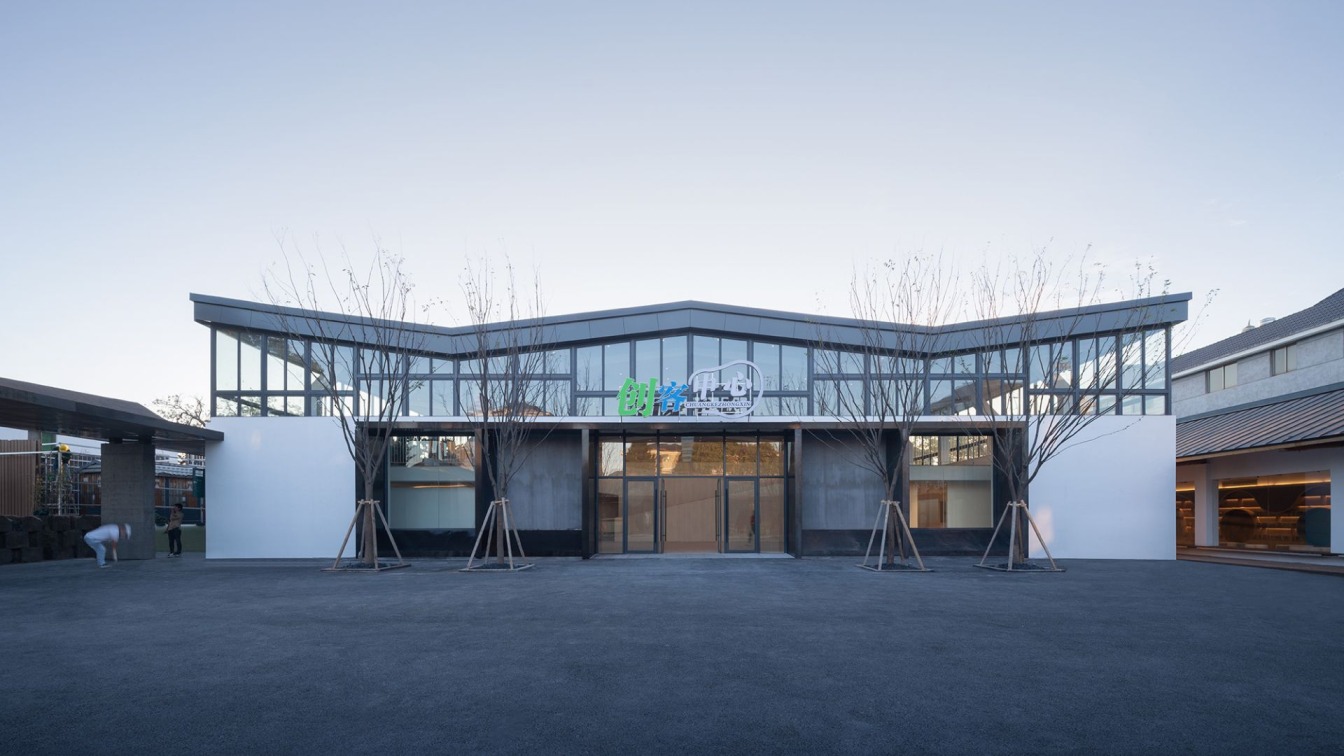Prokš Přikryl Architekti: Grain Silo Transformed into Cultural and Public Centre.
The Automatic Mills, a national cultural monument, is one of the first buildings designed by the architect Josef Gočár. Standing on the banks of the Chrudimka River in the centre of Pardubice, the monumental mill building was created in 1909 for the Winternitz brothers. In 1924, the complex was extended to include a grain silo, the conversion of which we designed. The automatic mills operated continuously for more than 100 years until 2013. Since 2016, the mill brownfield has been undergoing transformation into a cultural and social urban district, thanks to the initiative of the Automatic Mills Foundation.
This site is composed of several buildings and institutions (the regional Gočár Gallery, the city's “Gampa” Gallery, the “Sphere” central workshops for schools, the Infocentre and the Silo), linked by a brick carpet and equally by the unique tension existing between them. Each of the architects has grasped their building in a different way. All the buildings reinforce each other and thus form a living part of the city. The exceptional architects Zdeněk Balík, Jan Šépka, Petr Všetečka and investor Lukáš Smetana have contributed to the whole.
The main purpose of the Silo conversion is its social use, which one century after its construction has replaced the previous industrial function. The multi-purpose upper hall hosts theatres, lectures, concerts and social events. The roof terrace with bar offers a new view of the city. Exhibitions will be held in the newly accessible grain bins, and the silo ground floor now forms a covered public space. A basement with public toilets provides facilities for the entire new square.
A true building-machine, it originally contained three basic parts: the milling technology (Prokop and Sons), the skeleton framework (the work of the builder Pollert) and the outer shell (architect Josef Gočár). Thanks to Josef Gočár, who was to become unquestionably the greatest Czech architect of the 20th century, the mills were from the outset never perceived as purely an industrial building. Instead, they create the mystery of a machine hidden in a fortress. Even the grain silo, added to the mill in 1924, is itself not clearly graspable.

Considerations about the main entrance led to the decision to uncover the secret: activating the ground floor on both sides and creating a freely accessible public space under the bins. The idea of opening the building to the square went hand in hand with the overall opening of the site to the city after more than a century. Opening the gates, opening the parterre. We also introduced a new openness to the brick plinth through reintroducing a large opening that had been mysteriously closed. The exposed grain bins give the indoor space its atmosphere. A connection is made at parterre level via the side between the mills and the silo, at the location of the original doors. On the other side, by contrast, the base is broken through by a significantly wide new opening.
Today, as in the past, a single communication core connects the whole building. The main change is the hall inserted into the former machine room on the 5th floor, granting the space a privileged position above the entire area. Together with the hall, the roof of the building has been made wheelchair accessible.
The silo and its technology are characterised by verticality and a sense of vertical movement. The glass-concrete floor panels in the ground level and the hall create a path for light through all floors to the basement. Excavated between massive columns, this basement serves for facilities. Almost an underworld of their own, the underground spaces could have been the result of the columns being founded deeper than our explorations had anticipated. Another newly accessible space is the inside areas of the grain bins on the second-floor level: here, the very essence of the silo becomes visible.
The interior modifications are restrained. Colours and brickworks are confined to the facades, the interior is muted, the range of materials is standard and adheres to the principle of additions not standing in contrast to the old. All original surfaces are retained, including the patinas, or various drill holes and scars left by the demolished partition walls.
Simply put, the aim is to develop the building in its rationality and monumentality.

Technical report
The construction interventions involved mainly creating a full-length basement for the building, insertion of a communication core and construction of an open hall space in place of the pillared hall on the 5th floor. The condition of the 100-year-old concrete, which is now approximately C16/20, was very good, showed no defects and no repair was necessary. However, the horizontal structures did not meet the required loads and therefore were all replaced with new ones.
The basement, due to the groundwater level, was constructed as a white tank of waterproof exposed concrete with walls 300 mm thick. The entire structure was placed atop the existing footings and coupled with the columns. Upthrust risk was verified by calculation. An elevator shaft was concreted between the skeleton beams running the full height of the building. Surrounding this shaft is a steel grating staircase, anchored to the shaft walls via the stringers. A specific situation was the cutting of door-sized holes (920/2250 mm) in the monolithic walls of the grain bins.
For the new hall in the 5th floor, the ceiling, columns, roof slab and attic were removed. Of the original structure, only the perimeter brickwork remained. Following the demolition of the roof slab, the structural scheme changed from a frame to free-standing walls fixed into the ceiling slab; in consequence, during the construction process the walls were reinforced with temporary steelwork. New C-shaped columns were concreted to the existing columns in the perimeter masonry. A new flat roof was built, the attic was bricked in, and the shaft was finished off with a roof extension made of exposed concrete.
The defining point of fire safety was the hall at the level of the 5th floor and the roof terrace, from which there is only one escape route. The stairwell is a protected Type B escape route with forced ventilation. The ventilator is located in the basement, with the exhaust in the roof extension. The precast glass-concrete floor panels on the ground floor and in the hall also have a fire separation function and taken together, these atypical elements have a fire resistance of up to 90 minutes.
The building is partially heated. Due to the listed facades, the above-ground heated spaces are insulated internally. Calcium-silicate slabs of 75 mm thickness were used, as they place no burden on the existing structures in terms of year-round water vapour balance. The building is heated by a ground-to-water heat pump, where the heat source consists of six geothermal boreholes 120 m deep at the front of the site. The ventilation system is decentralised, equipped with heat recovery, while the main unit for ventilating the hall is located on the roof of the roof extension on the 8th floor. All heating, ventilation and lighting systems are connected to remote control and monitoring.





























































About studio / author
We founded the Prokš Přikryl architects studio in 2011 after working together on competitions while studying at the Czech Technical University. The form of our projects is determined by the context, concept, program, and we prefer layering over demolition. We consider competitions an important tool and strive for regular participation. We validate the designs on physical models.
We work on assignments of various scales and content, from smaller objects (office extension in Vysoké Mýto), through family housing (house with a ramp), to larger projects from recent years - Revitalization of the square in Divišov, Conversion of a grain silo in the Winternitz Mills in Pardubice
and Visitor facilities by the city reservoir in Jablonec nad Nisou.
The project of the guest facilities for a biotope at Honětice (2013) has won several Czech and foreign awards (Czech Architecture Award 2016 - ERA special prize, BigMat International Architecture Award 2015, National Award for the Czech Republic, Mies van der Rohe Award 2015 – nomination for the Czech Republic), the Office extension in Vysoké Mýto was awarded the Grand Prix in 2021 in the category of new building. The studio received the ARCHITECT+ magazine 2023 award.





